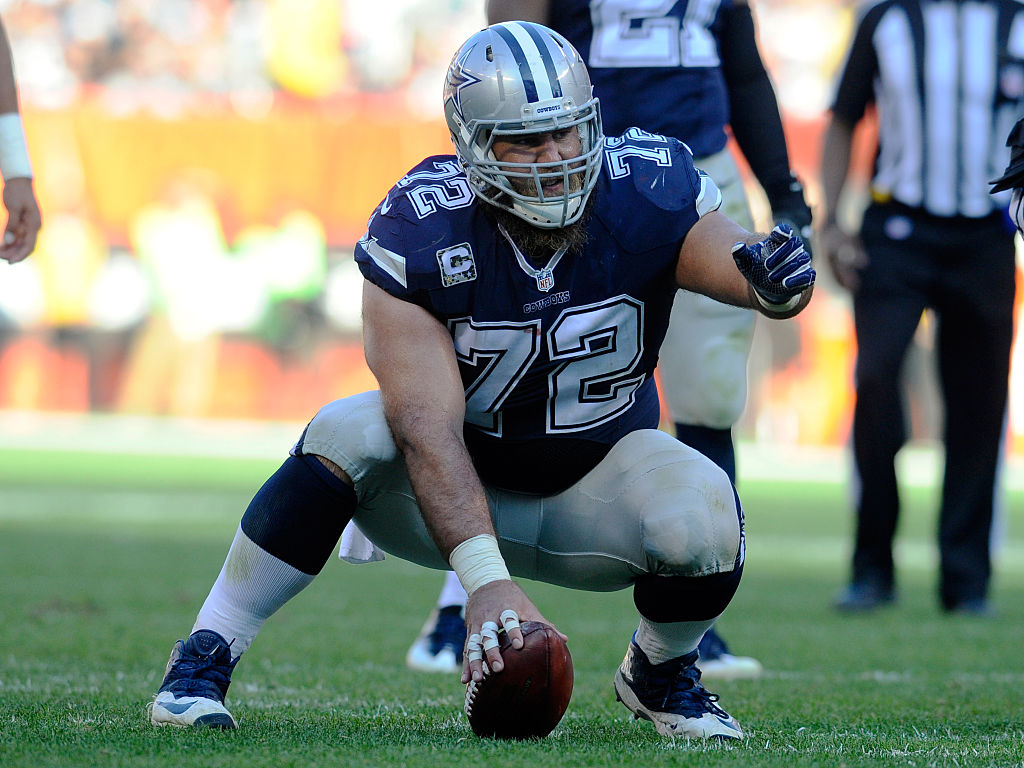NFL
Travis Frederick Shocks Cowboys By Retiring At Age 29

When the Dallas Cowboys selected Travis Frederick with the penultimate pick of the first round in 2013, nobody envisioned him becoming an All-Pro. In fact, both media members and fans widely panned the pick. After all, who spends a top draft pick on a center who put up some of the worst numbers at the scouting combine?
Yet, since the day he arrived in Dallas, Frederick quickly proved everyone wrong. For over half a decade, he manned the pivot position on one of the NFL’s most talented offensive lines. And with the Cowboys bringing back Amari Cooper and looking to work out a deal to retain Dak Prescott, the offense appeared to be loaded for 2020. That all changed Monday when the six-time Pro Bowler announced that he’s retiring from the NFL at the age of 29.
Travis Frederick went from a first-round reach to an All-Pro
Coming out of Wisconsin, Frederick garnered second- or third-round grades from many scouting services. Still, that didn’t stop the Cowboys from spending a premium draft pick on an important position in their offense. Of course, Dallas had a history of investing in the offensive line.
The Cowboys selected left tackle Tyron Smith with the ninth pick in 2011, and he quickly asserted himself as an elite player. After grabbing Frederick with the 31st pick in 2013, the Cowboys spent another first-round pick on the offensive line the following year by selecting Notre Dame’s Zack Martin.
That trio paved the way for Ezekiel Elliot to put up monster numbers. Frederick made the calls and helped ease the transition from Tony Romo to the unproven Dak Prescott. From 2013-2017, the Cowboys finished fifth in scoring three times and earned two playoff berths. Despite Smith battling injuries, there was no doubt that Dallas boasted the best offensive line in the NFL.
Travis Frederick missed the entire 2018 season due to rare autoimmune disease
Unfortunately, Frederick’s career took a major turn in 2018 when he was diagnosed with Guillain–Barré syndrome. This rare autoimmune disease caused Frederick to miss the entire season and left many to wonder whether he’d resume his NFL career.
With their star center sidelined, the Cowboys dropped from 14th in scoring to just 22nd in 2018. Elliot did rush for 1,434 yards, but he scored just six touchdowns after posting 22 in his first 25 games. Prescott’s performance also suffered without his trusted battery mate. The third-year starter did increase his completion percentage to 67.7, but he managed just 22 touchdowns and watched his QBR drop to 56.2.
Dallas did go 10-6 and win the NFC East. However, after defeating the Seattle Seahawks in the opening round, they lost to the Los Angeles Rams in the NFC Divisional Round.
Frederick’s retirement leaves Cowboys shorthanded at center
Frederick did return for the 2019 season and helped the Cowboys improve significantly on offense. Just a year removed from ranking 22nd in points and yards, the Cowboys jumped all the to sixth in scoring and actually led the league in total yards. Despite his presence, the Cowboys went just 8-8, mostly due to the ineptitude of Jason Garrett.
However, by announcing his retirement on Monday, Frederick leaves behind a massive hole on the offensive line. New head coach Mike McCarthy will have to look for a replacement, perhaps in the upcoming draft. And with the first round of free agency already gone, the market doesn’t contain a lot of promising options.
What’s most interesting about Frederick’s surprising retirement is that it’s just another example of a star NFL player calling it quits before the age of 30. In the last few years, Andrew Luck, Rob Gronkowski, Patrick Willis and Luke Kuechly have all retired much earlier than expected due to injuries. Players are more aware of the long-term effects of concussions, though in Frederick’s case, his battle with Guillain–Barré syndrome led to his shocking decision.
He leaves behind a huge hole in terms of production and leadership. Now, it’ll be up to the Cowboys’ front office to find a replacement for one of the best centers of the last decade.











